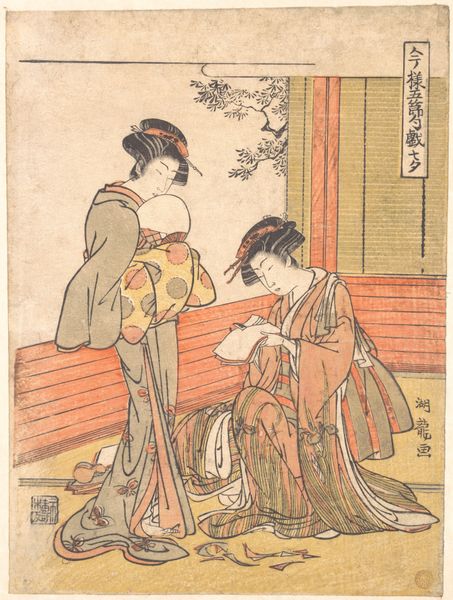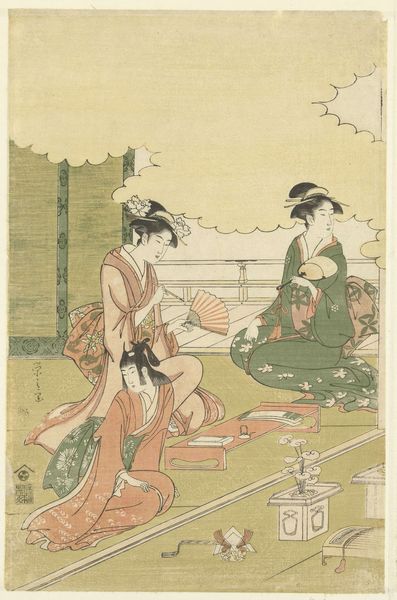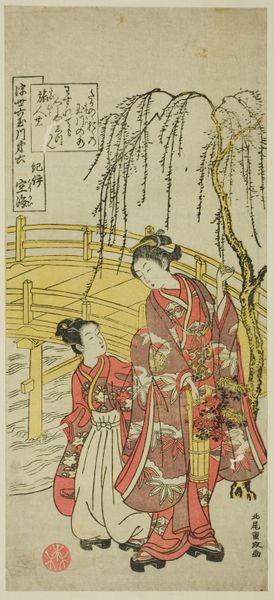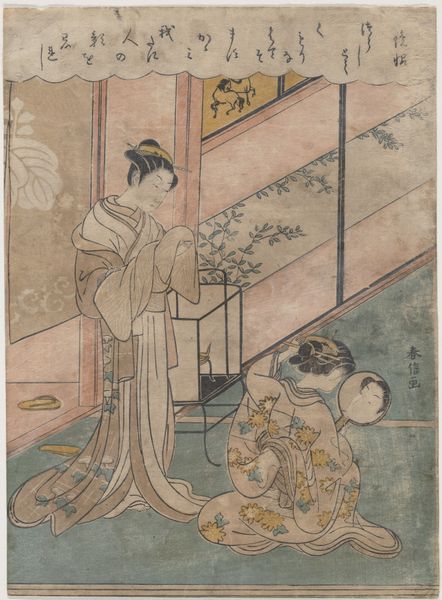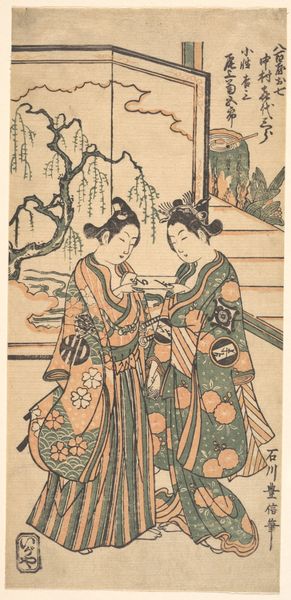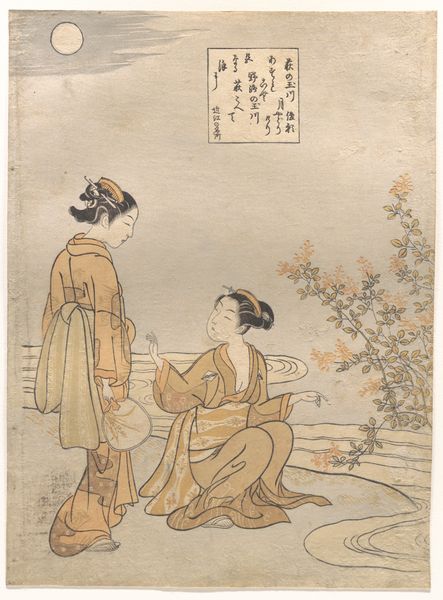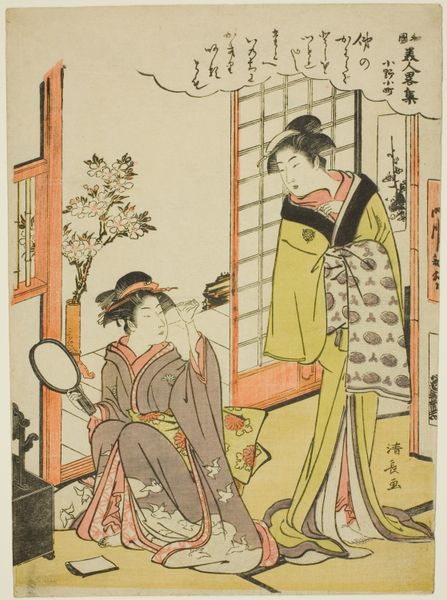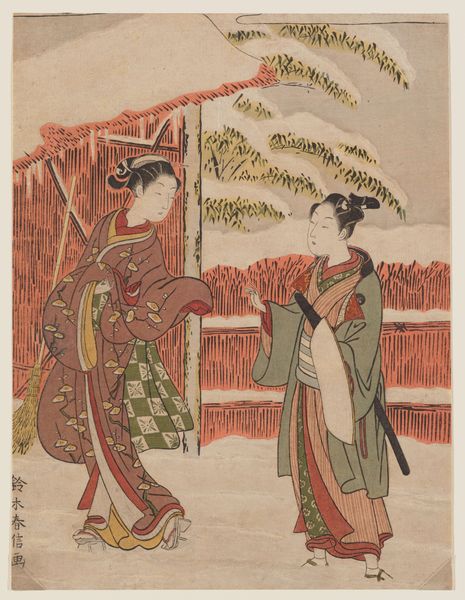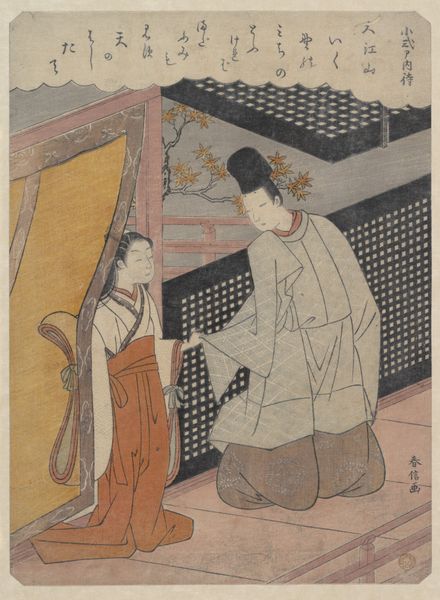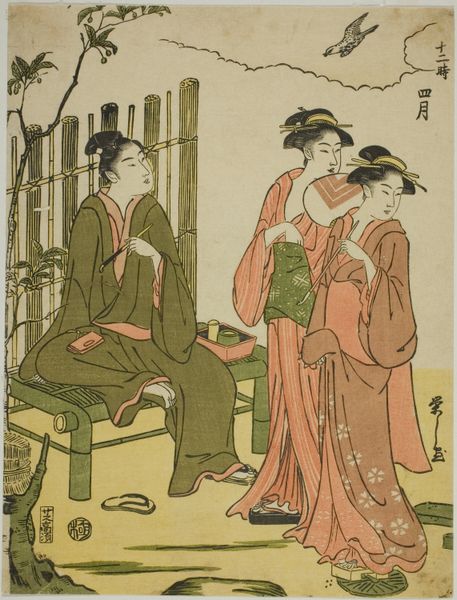
print, woodblock-print
# print
#
asian-art
#
ukiyo-e
#
woodblock-print
Dimensions: H. 9 7/8 in. (25.1 cm); W. 7 1/2 in. (19.1 cm)
Copyright: Public Domain
Curator: Let’s turn our attention to this Japanese woodblock print. "Reizei Carrying a Teshoku (Hand Lantern)" by Isoda Koryūsai, created sometime between 1759 and 1779. It's an exquisite example of Ukiyo-e, now residing here at the Met. What are your first impressions? Editor: I'm immediately struck by the composition—the delicate lines, the subtle color palette...it evokes a sense of quiet intimacy. It almost feels like a stolen moment, caught in the soft glow of that lantern. Curator: Absolutely. It's essential to view Koryūsai's work through the lens of its sociopolitical context. This piece exists within the Edo period, a time marked by strict social hierarchies. Depictions of courtesans and geishas weren't mere representations; they subtly negotiated power and gender roles within a restrictive society. What can you tell me about its materiality? Editor: Well, being a woodblock print, we must acknowledge the layers of skilled labor involved. From the artist's initial design to the block carvers and printers, each contributed to the final piece. The very process speaks to a network of artisans engaged in both creative expression and commercial enterprise. How many blocks did they use here? Curator: I wonder too what kind of paper was employed? The print's survival suggests a specific craft with unique preservation practices that allowed this visual representation to survive as more than mere image. Think about the access these materials grant and deny the average worker... How are those access divisions complicated by the subject matter? Editor: Exactly, it also reflects consumption and cultural exchange. The availability of specific pigments and the choice of paper reveal trade routes and networks, making this image part of a larger material and economic system. Curator: True. We must consider the role these prints played in shaping societal perceptions. Ukiyo-e often acted as a mirror reflecting, and sometimes distorting, societal values concerning femininity, class, and desire. Examining such imagery gives a profound understanding of social and historical attitudes, particularly toward women and pleasure. Editor: It's a confluence of aesthetic skill and societal structures. I love how we can tease all of that information out from a 'simple' print! Curator: It's about appreciating the artwork's place in social and political movements and examining the history of those complex interactions. Editor: And its place as a carefully crafted object embedded within systems of production and exchange. Together, the material and meaning amplify this work beyond a beautiful representation.
Comments
No comments
Be the first to comment and join the conversation on the ultimate creative platform.

